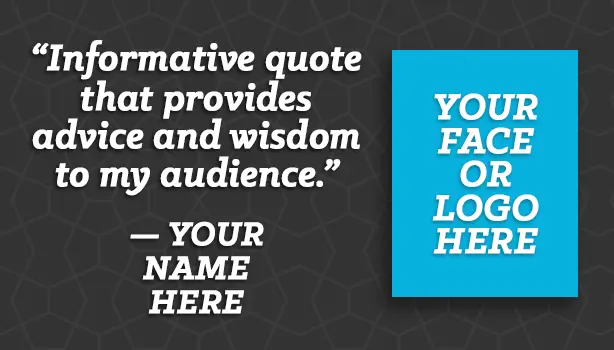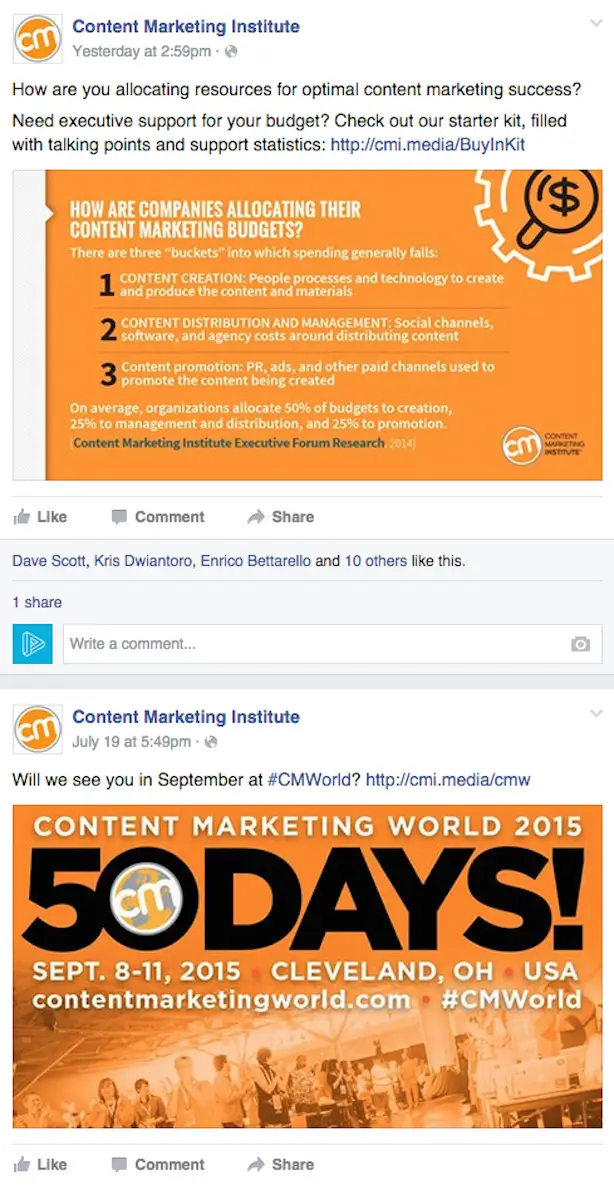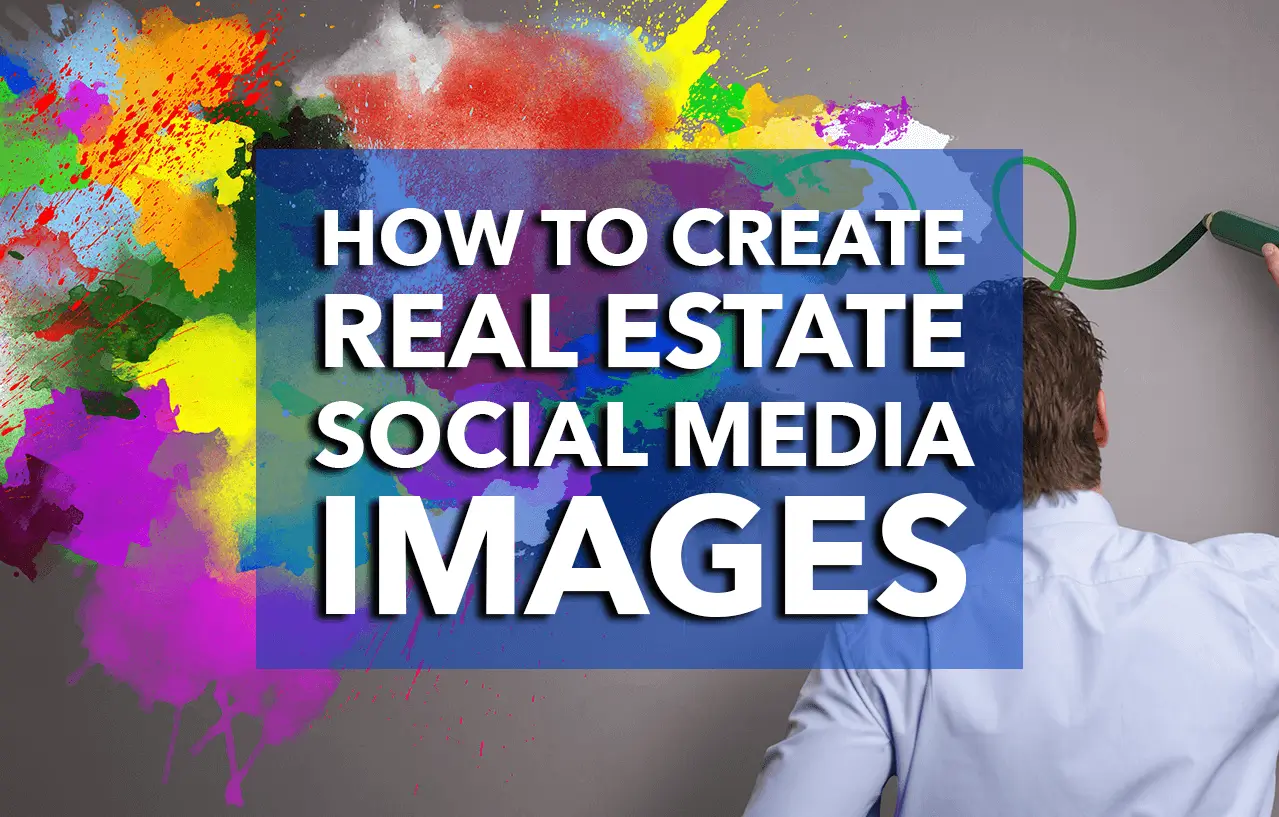Adding photos to Facebook status updates leads to 53% more page likes. Implementing photos in tweets generates 35% more retweets. These types of statistics should influence your real estate social media marketing strategy, particularly as it relates to your use of images and photos on your social profiles. Don’t assume you can toss just any old picture or graphic on your accounts, though. Rather, you need (as with your other real estate marketing tactics, mediums, and goals) a detailed, carefully thought-out plan for how to create or get images your audience will find intriguing and that encourage them to engage with you.
Keep your primary audience in mind when creating real estate social media images.
A 100-character tweet and 1,000-word blog post both share one vital thing in common: creating them properly requires a thorough understanding of one’s customer persona. Without knowing who you should market to, your real estate marketing will go nowhere.
Take luxury home buyers as an example: If you mainly target sellers with properties in the $500,000 range or higher, the listing photos you share via your Facebook Page should reflect their interests. Start with photos of recent high-end properties you’ve sold and add aesthetically appealing copy (i.e. text in an attractive font on a colored banner) with information regarding the transaction, like sale price and how long the home was on the market — details that can influence your audience to learn more about you, visit your site, and even consider hiring you.
Similarly, if you want to market an ebook you created for luxury sellers, develop an image you can use on your social accounts that explains exactly what they’ll find in the book. For instance, create a graphic that provides the title, a few bullet points on topics covered in the ebook, and a call to action (CTA) telling your fans and followers to download the content today. Here’s one iteration of what this could look like:


Check out the many free and paid stock photo resources at your disposal.
If your preference is to use others’ photos and images and adjust them as needed for your real estate social media marketing instead of creating graphics from scratch, you have plenty of options for locating ideal ones.
Local market photos can be found through an array of different sites, including Wikipedia, which offers millions of photos that can be used and modified for commercial and personal use online (with some limitations, of course), and Flickr Creative Commons, a community of seemingly endless photographers — amateur and professional alike — who enjoy sharing the shots they snap. There are many license types for photos and images on the site, however, so read the license associated with the individual images that interest you to ensure you can use and alter them for your marketing needs.
Aside from these open-community websites, there are paid stock photos services that offer just about every type of photo, illustration, and multimedia file you can think of. Need a picture of a couple shaking hands with an agent in front of a beautiful suburban home on a sunny day? Done. Looking for a vector image featuring dozens of housing-related icons, like house keys and doormats? They can be easily found. Shutterstock, iStockPhoto, BigStockPhoto, and Thinkstock are some of the most popular paid stock photo services around today. Each one offers variations of monthly and annual subscriptions which allow for different numbers of photo downloads each month.
Again, as with the free photo sites, there will be some restrictions on which photos can be used in certain online locales and altered, so read the fine print closely before clicking “download.”
Even texture and pattern backgrounds work well for real estate pictures on social media.
The trick with creating appealing social media images is finding a good balance between providing enough graphical pizzazz to inform and attract followers without going overboard on flashy elements or overly long copy. Here’s another way to put it: You want just the right amount of text and a coherent, not-too-over-the-top theme that gets your social posts clicked. If you feel photos may prove to be too loud for your social channels, there’s always pattern and texture real estate background images you can use for your tweets and status updates.
Both the free and paid stock photo sources mentioned above offer these types of graphics, but a simple Google search of “best texture backgrounds” or “best pattern backgrounds” yields pages and pages of high-quality sites providing images for free commercial use. Subtle Patterns, bgfons, Pattern Cooler, and Brusheezy are just some of the stellar sites that feature hundreds (if not thousands) of options for any blogger or professional’s graphic creation needs. The example below shows how striking a patterned background can be when implemented properly:

Test tools that help modify stock photos and create images from scratch.
Once you download the photos you want to use in your social media images, it’s time to:
- Decide which need to be modified to fit your messaging and branding.
- Identify the tools you should use to do so.
Photoshop is the most popular photo-editing tool today. The software is one of many multimedia editing resources offered through Adobe’s Creative Cloud suite. While it may cost a pretty penny, the tool is relatively intuitive and offers countless unique features that can transform and beautify images. Some of the most relevant uses for agents include:
- Softening and darkening photos to implement dark or light text over them, which can, in turn, make them easier to read for social media users
- Cropping images and resizing them to highlight the best components of the image and conform to the right dimensions for certain social networks (more on that below)
- Slice and dice photos to give them a surreal aesthetic or make them pop off the screen, which can better grab social media users’ attention
Of course, these are just a few of the potential alterations you can make using Photoshop, and there are plenty of other free and paid services that provide different editing capabilities. If a more basic editing tool is what you desire (don’t worry if this is the case — after all, your title is “real estate agent,” not “expert graphic designer”), then try software like Microsoft PowerPoint, Apple Keynote, and Google Slides — all three of which are chiefly meant to serve as presentation tools, but you can add photos and images to slides and use the editing functions to create standalone graphics as well. You can also try websites like Canva and PicMonkey. Buffer offers a substantial list of ideal tools to use for image creation, and SproutSocial has provided a list of intuitive ones, meaning no lengthy or convoluted instructions on how to use the sites and services.
Learn what works from the best-of-the-best social media marketers.
Lacking a vision for your pictures and images at the onset of your social media for real estate strategy isn’t uncommon or something to worry about. It simply means you haven’t had exposure to a successful social media campaign that aptly uses photos and images. Whether it’s other agents who have a comprehensive presence on social media or brands and professionals outside the real estate industry who are adept with their social media marketing, you can learn a thing or two (and more) from them.
Identify how fellow agents in your market and even big brands (e.g. Coke, Nike, etc.) use graphics for social media. Chances are some patterns will reveal themselves to you with the more photos and images you look at. Perhaps it’s one font type, size, or color that is used for every graphic shared, or maybe it’s the same group of CTAs used on every promotional image. Regardless of the qualities you discover in these accounts, take note of what you like and determine how you can emulate the work for your own real estate social media presence — with your own original spin, of course.
Here are some images from Better Homes and Gardens Real Estate’s Twitter background design. Notice the soft hues in the header image and tweets, and how they fit in perfectly with the company’s branding. You don’t need to mimic this branding scheme for your account, but take note of the intricate details of profiles like these and then decide which to enact on your own:

Consider your branding (logo, color scheme, messaging, etc.) when crafting your images.
Before delving into image editing, a strategic, harmonic theme is needed for your real estate images that brings together a unified color scheme, your branding design, and the messaging at the heart of your marketing strategy. Building your real estate branding takes time, but a key part of this growth process is in the visuals you share with your audience online, including not just on social media, but also your website, email marketing campaigns, and external content contributions on others’ publications, blogs, and sites. For the sake of this post, though, let’s focus on what needs to be taken into account for your social graphics.
First, consider your logo. As a University of Southern California report on logos’ effectiveness notes, “Visual symbols may personalize a brand and provide customers with a sense of connection better than brand names alone do, possibly because symbols are an effective means of communicating information to people.” Thus, if you don’t have a logo and, in turn, aren’t using it in your online marketing, especially on social media, you’re missing out on the chance to become memorable. If you need inspiration for what a modern logo should entail, check out this in-depth study from LogoLounge, a branding research and community site.
Once you have a logo, it’s imperative to get multiple file versions of it from the graphic designer who created it, or, if you created it yourself, develop these files. This should consist of different variations in terms of size (think in terms of pixels), colors (white or light versions to be used on dark backgrounds, and vice versa), and special accompaniments (e.g. use a version of your logo with a drop shadow or banner behind it for listing-related images).
After these files have been constructed, consider what other graphical elements you want to add to every image used on your real estate social media outlets. For instance, you can add a fancy border and matching typeface for each Twitter image, and simply adjust the color depending on the background. It’s this kind of consistency that makes people remember your brand more and more over time. Logos with these graphic components and limited but catchy copy can go a long way in getting your target audience to gradually recognize you and the value you offer.
Just take a look at the Content Marketing Institute’s Facebook page, which contains multiple images featuring succinct but enticing copy, great logo integration, and uniform imagery that wows and jumps off the page:

Size your real estate social media images accordingly for each particular channel.
Though it certainly needs to be considered during the planning, designing, and editing stages, ultimately, the final task to handle in forming real estate photos and images for your social strategy is sizing. Using social media for marketing means understanding each social network has its own sizing requirements for images. For instance, the header and profile headshot images for Twitter differ in pixel size compared to those for Facebook. Meanwhile, the standard Pinterest image size differs from that of Instagram. There’s no shortage of guides and handbooks that can help you figure out the right sizes to make your social media pictures:
- SumAll — The Ideal Image Sizes for (almost) Every Social Network
- Constant Contact — [Infographic] 2015 Social Media Image Size Cheat Sheet and Image Tricks
- Social Media Examiner — Ultimate Guide to Social Media Image Sizes
- Buffer — The Mega Guide to Ideal Image Sizes for Your Social Media Posts: Guidelines for All 6 Major Social Networks
- Canva — The Complete Social Media Image Size Guide: With Awesome Design Tips [Infographic]
Learn how to become an expert at real estate photography and shoot photos for your real estate social media needs by checking out our Academy post here.
What resources do you use to get the best real estate images and photos for your social media accounts? Share your favorite resources with us in the comments below!





